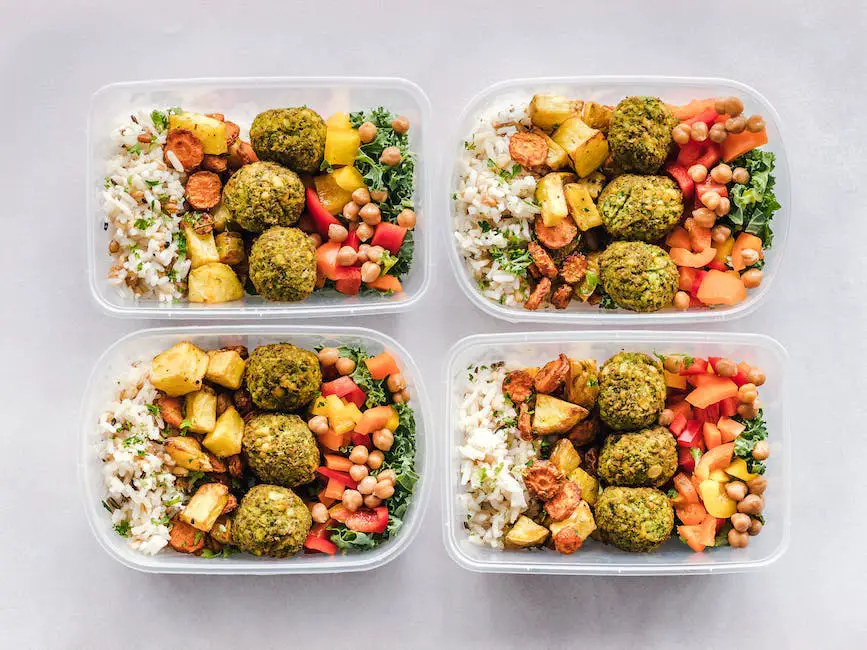No matter how much we love our canine companions, proper communication between humans and dogs still involves a steep learning curve for both parties. As Leo F. Buscaglia aptly put it, a dog could be your most loyal companion if you offer him your heart. One of the best ways to forge this deep connection with your canine buddy is through understanding and respecting their unique behaviour and body language. Consequently, this enhances the effectiveness of conveying basic commands and utilising training techniques forming the backbone of any obedience class. Crucially, consistency and reward-based training methods provide a motivation for dogs, facilitating learning and retention of desired behaviours. Occasionally, we may encounter behavioural issues with our furry friends, but even these can be surmounted with the right approach in obedience training. Above all, maintaining the happiness and engagement of our dogs during these sessions ensures a rewarding and positive learning environment.
Understanding Dog Behaviour and Body Language
Cracking the Canine Code: Mastering Obedience Classes Through Dog Body Language and Behaviour
Whether in the gym or training a beloved pet, successful results often boil down to effective communication. Training your dog, much like training your body, benefits from healthy lines of communication. Just as your personal trainer understands your challenge points and motivates you to push through, gleaning into a dog’s body language and behaviour is monumental for mastering obedience classes.
Why is dog body language so crucial? Just as one would learn human behavioral cues like a nod of approval or a shake of disapproval, in the dog world, body language is their primary mode of communication. For instance, a wagging tail often communicates happiness, while a tucked tail signifies fear or submission. Not catching these signs, like missing a crucial workout set, can lead to confusion and possibly sour relationships.
A dog’s body stance is an open book on their feelings. A relaxed, open stance indicates a relaxed dog, while a rigid, closed stance might imply fear, aggression, or discomfort. Watching your dog during training can be like studying your body language during a workout. Each movement communicates something different, and understanding them can revolutionize the way you train.
Besides the body stance, your dog’s eyes and ears are prominent communication tools. A dog’s eyes can light up like holiday cheer when they’re excited or narrow down when they’re apprehensive or mildly aggressive. Similarly, ears pricked up often indicate alertness or interest, while flat ears might indicate fear or uncertainty.
Observing a dog’s body language and behaviour is a fruitful way to enhance obedience training outcomes. Positive reinforcement works wonders in both fitness and dog training. Rewarding good behaviour, much like celebrating workout milestones, can keep your dog motivated to obey.
Taking a page out of a personal trainer’s book, commands can sometimes be given without even speaking. Non-verbal cues are great for teaching dogs new tricks or behaviours. Just as a personal trainer might point to a piece of equipment or motion for additional reps, employing hand signals can strengthen the bond between you and your dog whilst enhancing command interpretation.
Similar to workout routines, consistency is key in dog training. Repeated positive exposure to obedience training commands and social situations is kind of like how repeated workouts can bring out the results you desire. A well-rounded workout routine includes everything from cardio to strength training, and similarly, a well-rounded obedience program should include a little bit of everything – commands, socialisation and behaviour regulation- all vital areas in your dog’s ‘fitness’ regime.
In a nutshell, just as a seasoned personal trainer reads what our body says and tailors the workout to optimise the results, comprehending our furry companions’ body language and behaviour boosts your efforts at mastering obedience classes. So, no more (dog) days of miscommunication or confusion. Let’s read the tail-wags, ears, eyes and body language to make obedience training an enriching experience for both you and your furry friend.
Basic Commands and Techniques
The nitty-gritty of Obedience Commands
To understand the crux of dog obedience classes, let’s delve into the basic commands typically learnt in dog training programmes. These may seem like simple, routine commands but they can do wonders to create an ideal dynamic between the owner and the pooch. Learning and executing these commands consistently will not only perfect your control on your furry friend but also make everyday activities smoother.
“Sit” is usually the first command a dog is taught. It’s a base to many other commands and is instrumental in situations like feeding or when guests arrive at your home. Making your four-legged friend understand this command is crucial to establishing obedience.
“Wait” or “stay” are fantastic commands that can be a lifesaver in certain scenarios. Picture this: you’re at the park, and you see your dog running towards a crowded road. A firm “stay” command in this scenario could save the day. Or just think of the benefit of having your dog “wait” calmly before being served their meal, rather than bouncing off the walls in excitement.
Next in line, we come to the “heel” command. This directive is especially beneficial during walks or when navigating through bustling environments. It ensures that your dog walks in line with your left leg, avoids pulling on the leash and makes your promenades pleasurable.
“Leave it” is a command that helps both inside and outside the home. It not only helps your dog avoid biting unwanted items, shoes for instance, but could also prevent them from gobbling something harmful in the park. This command is a clear win-win for your shoes and your pet’s health.
“Come” or the recall command is an essential tool in controlling your dog’s behaviour outdoors. This command is especially useful when your pet is wandering off to an unsafe area or to bring them back to your side during a game of fetch.
A lesser-known but immensely useful command is “quiet”. While dogs love barking, teaching your pet this command will secure you some peace and quiet when needed or avoid bothering the neighbors’ peace.
While these are a few basic commands in dog obedience classes, the actual list of commands is never exhaustive. These techniques can bring a significant and noticeable change in the behaviour of your furry pet and turn day-to-day activities into smooth, enjoyable experiences. So, go ahead, let the training begin and watch your bond strengthen with your canine buddy. Zeal, patience and repetition can create an obedient and love-filled canine companion.
Reward-Based Training and Consistency
Reward-Based Training for Dog Obedience: The Integral Role of Consistency
Reward-based training for dogs promises effective results. Based on a simple premise – dogs will perform behaviours that are rewarded. This positive reinforcement strategy motivates dogs to learn new commands and manners due to the associated rewards.
Moving away from punishment-based methods, reward-based training encourages a mutual respect and understanding between the owner and their pet. The ‘reward’ can be anything the dog deems valuable such as treats, toys, praises, or even recreational walks.
Consistency in dog training is not just a luxury. It’s a necessity. Think of the gym-goers who stick to their workout schedules. They’re the ones who see change and growth. It’s the same for your furry friends. Steadfast consistency ensures that the same rules are applied at all times. This enforces a clear boundary for what’s acceptable behaviour and what’s not.
Creating a pattern or routine goes hand in hand with consistency. Dogs are creatures of habit. Routine commands such as meal timings, walk timings, and even their sleeping areas, helps dogs know what to expect and what’s expected of them.
The key is simplicity. A command should be one or two-word phrases which are easy for the dog to comprehend. Consequently, decisions about which phrases to use should stay consistent. Imagine if you were told to “jump” today, “leap” tomorrow and “bop” the next day. You’ll rightly be confused. So, don’t confuse your dog.
Every member of the house needs to use the same commands for the same action. Consistent newspaper placement at the door for nature’s call or the sound of a food tin being opened to signal mealtime, these patterns make instructions comprehensible to dogs.
Reward-based training combined with unyielding consistency instils obedience in dogs in a nurturing, respectful and effective manner. Just as a dedicated athlete commits to their fitness training, stay committed to teaching and guiding your dog, and in no time, your dog’s obedience will no longer be a ‘sit-and-pray’ but a ‘sit-and-stay’.
Dealing with Behavioural Problems
Dog obedience classes can work wonders for behavioural issues, and it’s important for trainers to approach this task with thoughtful attention. This is a journey and not a destination; each training session is a chance for growth and learning for both the pet and the owner.
Firstly, trainers need to comprehend a dog’s problem behaviour before working towards a solution. Is the dog hyperactive? Does it show signs of anxiety? Determining the underlying reason for the behaviour is key. Is it bred into them or is it a learned behaviour from previous owners? Uncovering these answers aids in tailoring effective training strategies that work on eliminating these issues.
Next up, trainers need to consider the dog’s breed when developing a training plan. Different breeds have varying energy levels, temperaments, and intelligence levels. A training method that works for a Labrador Retriever might not be as effective for a Chihuahua. Understanding the breed specificities can dramatically affect the success rate of training.
Additionally, trainers need to consider the dog’s past experiences. If a dog has previously been treated poorly, it may have trust issues and could act defensively. Trainers should take care to avoid triggering any traumatic memories and instead focus on developing trust with the dog.
Obedience classes provide a prime opportunity to socialise dogs with other pets and people. This can help to curtail antisocial behaviours, lessen fear of strangers, and aid in relieving anxiety. Moreover, these classes often offer a controlled setting to help dogs adapt to unfamiliar situations and environments, encouraging their natural curiosity rather than fear.
Training methods that prioritize incremental progress are usually more successful. Each step should be trained separately before moving to the next. For instance, before expecting a dog to stay for several minutes, trainers should initially focus on getting the dog to stay for a few seconds. Break down the process into manageable stages to keep the dog from becoming overwhelmed.
Lastly, trainers should also factor in the dog’s age. An older dog may require a slower approach in obedience training compared to a sprightly puppy. Adapting the pace, methods, and techniques according to the dog’s age harnesses their potential effectively.
Taking all these factors into consideration, dog obedience classes are an excellent resource to help with behavioural problems. These classes provide structure, socialization opportunities, and tailored training techniques that work to resolve issues from their roots. It’s not an overnight process, but with patience and persistence, meaningful results can be achieved. As in any training journey, the results reflect the heart and time invested. It’s all about understanding, compassion, and consistency. So let’s get started!
Keeping Canines Engaged and Happy
Creating a fun and enjoyable training experience for your dog is something that goes beyond basic obedience commands, hand signals, and communication cues. It branches out into the realm of activity-based learning and dog-friendly playtime, which can create dynamic changes to the dog’s experience and attitude towards training sessions.
Dog-centric Games and Environment
Making use of games is an excellent way for dogs to learn and understand various commands and signals. It’s not about simply obeying a command, but engaging their mind and body, thus making the learning process exciting. Games like retrieving items or navigating obstacle courses helps in more ways than one – it allows your dog to exercise, to learn commands and to have fun, all at the same time.
To maintain a positive and energetic atmosphere during training sessions, the environment plays a pivotal role, too. Choose an area where your dog feels comfortable and safe – familiar surroundings are most likely to lower any anxiety or uncertainty. Always remember to keep a clean and tidy space for your dog’s safety.
Balancing Training with Play
Over-training can saturate your dog’s learning curve, and will eventually lead them towards being less receptive. Therefore, balance out the training with adequate play and leisure time. For instance, after practicing a new command, take your canine friend for a walk or play fetch. This not only rewards the dog but also reaffirms the positive relationship between needful actions and pleasant experiences.
Engagement of the Dog’s Sense of Smell
Canine intelligence isn’t limited to the ability to understand commands and signals. Dogs possess an extraordinary sense of smell, and it’s a remarkable detailed resource waiting to be tapped into for training. Incorporate scent-based activities like hunting games into the training sessions. Your dog will be motivated to participate, keeping them engrossed and making the whole training experience enjoyable.
Satisfying Their Curiosity
Curiosity is a trait inherent to all dogs, and satisfying it could be an exciting and rewarding challenge during training sessions. Allow your dog to investigate new items and surroundings – encourage and reward them for their curiosity as it can be an indicator of a well-trained, socialized, and confident dog.
Weekly Goals and Achievements
Set achievable, progressive goals for your dog. It could be learning a new command or perfecting an existing one. Achieving these goals should mean they earn something they enjoy, like a favourite treat or an extra-long play session. This not only keeps the dog motivated, but also helps you track their progress and adjust your training strategy if necessary.
Remember, training needs to be built around understanding, trust, patience and consistency. Dogs are not just pets but companions, and their training needs to be a reflection of the bond between you. Over time, these sessions will create a well-trained, obedient, and most importantly, happy dog. Each dog is unique, and hence, the training methods should be tailored to fit them, ensuring it remains an enjoyable experience for your four-legged friend at all times.
So, whether you’re puzzling over your canine’s enigmatic gestures, struggling to get them to sit or stay, or dealing with a persistent behavioural problem, remember that patience and understanding are your two greatest assets. Using reward-based training in a consistent manner could forge a new path for your relationship with your dog. And this fascinating journey isn’t merely about shaping your dog’s behaviour, it’s as much about learning and growing as a dog-owner yourself. The knowledge and experience you gain along the way will not only improve your dog’s behaviour but also solidify the bond you share with your loyal friend. So, venture forth into the exciting world of obedience classes, equipped with these insights, and experience the joy of seeing your dog respond to your commands, overcome behavioural challenges and more importantly, be happily engaged in the process of learning.








